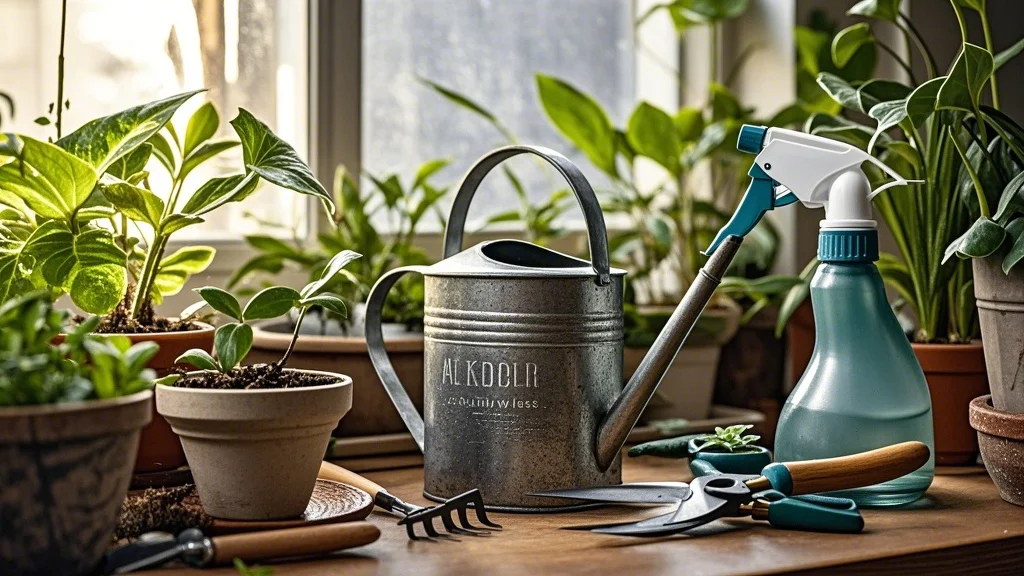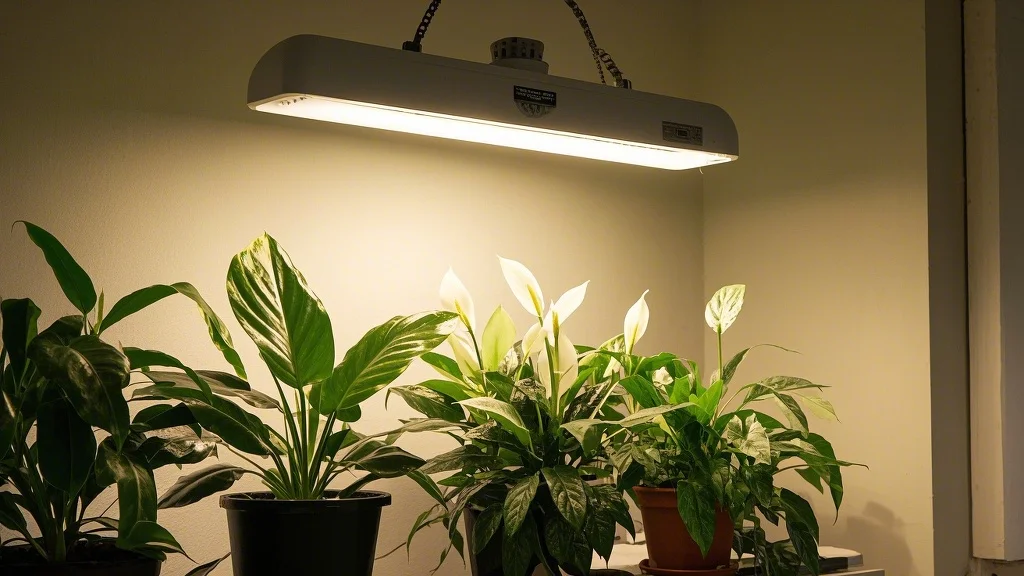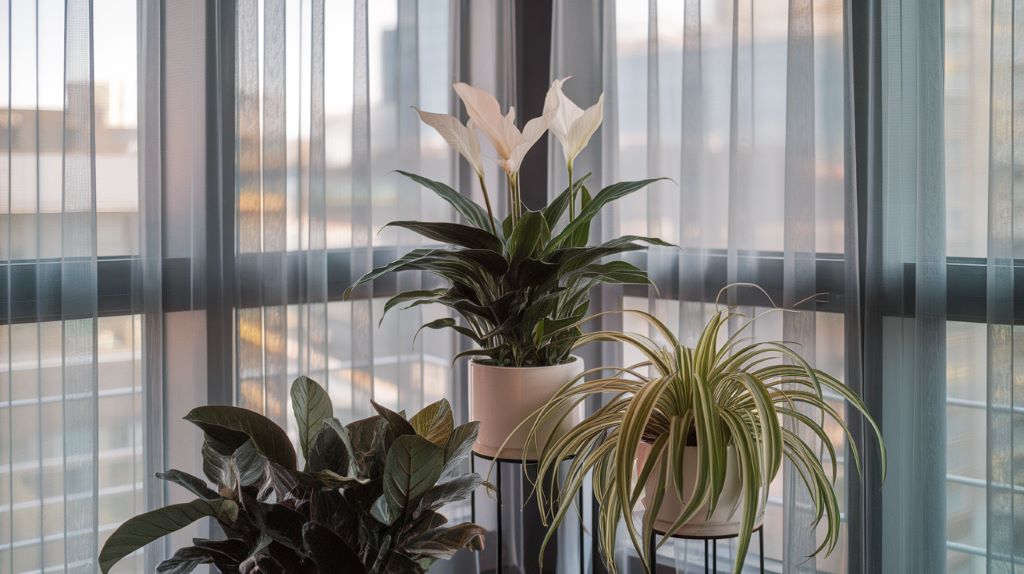As winter descends and daylight hours dwindle, many plant enthusiasts find themselves facing a common challenge: how to keep their indoor gardens thriving in low light conditions. For urban dwellers and those in northern climates, the dark winter months can be particularly challenging for houseplants. However, with the right selection of plants and proper care techniques, it’s possible to maintain a lush, green oasis even during the coldest, darkest time of the year.
In this comprehensive guide, we’ll explore a variety of low light plants that are well-suited to survive and even thrive during the winter months. We’ll also delve into essential care tips to ensure your plants remain healthy and vibrant throughout the season.
Contents
- 1 Understanding Low Light Conditions
- 2 Top Low Light Plants for Winter Survival
- 2.1 1. Snake Plant (Sansevieria)
- 2.2 2. ZZ Plant (Zamioculcas zamiifolia)
- 2.3 3. Chinese Evergreen (Aglaonema)
- 2.4 4. Pothos (Epipremnum aureum)
- 2.5 5. Peace Lily (Spathiphyllum)
- 2.6 6. Spider Plant (Chlorophytum comosum)
- 2.7 7. Dracaena
- 2.8 8. Philodendron
- 2.9 9. Cast Iron Plant (Aspidistra elatior)
- 2.10 10. English Ivy (Hedera helix)
- 3 Essential Care Tips for Winter Plant Survival
- 4 Troubleshooting Common Winter Plant Issues
- 5 Conclusion
Understanding Low Light Conditions
Before we dive into plant selection, it’s crucial to understand what constitutes “low light” in the context of indoor gardening:
-
Low light: Areas that receive little to no direct sunlight, typically north-facing windows or spaces far from windows.
-
Indirect light: Bright areas that don’t receive direct sunlight, such as east or west-facing windows with filtered light.
-
Artificial light: Supplemental lighting from grow lights or fluorescent bulbs.
During winter, even areas that typically receive bright, indirect light may become low light zones due to shorter days and the sun’s lower position in the sky.
Top Low Light Plants for Winter Survival

1. Snake Plant (Sansevieria)
The snake plant, also known as mother-in-law’s tongue, is renowned for its hardiness and ability to thrive in low light conditions.
Care tips:
- Water sparingly, allowing soil to dry completely between waterings
- Tolerates a wide range of temperatures (50-85°F)
- Prefers well-draining soil
2. ZZ Plant (Zamioculcas zamiifolia)
The ZZ plant is an excellent choice for those seeking a low-maintenance, drought-tolerant option that can withstand low light environments.
Care tips:
- Allow soil to dry out completely before watering
- Tolerates neglect and irregular watering
- Avoid direct sunlight to prevent leaf burn
3. Chinese Evergreen (Aglaonema)
Chinese evergreens are known for their ability to adapt to various light conditions, making them perfect for darker winter months.
Care tips:
- Keep soil consistently moist but not waterlogged
- Prefers warm temperatures (60-75°F)
- Mist regularly to increase humidity
4. Pothos (Epipremnum aureum)
Pothos is a versatile, fast-growing vine that can tolerate low light conditions with ease.
Care tips:
- Allow soil to dry slightly between waterings
- Prune regularly to maintain desired shape and promote bushier growth
- Can be grown in water or soil
5. Peace Lily (Spathiphyllum)
Peace lilies are not only beautiful but also excellent air purifiers that can thrive in low light environments.
Care tips:
- Keep soil consistently moist
- Mist leaves regularly to increase humidity
- Tolerates a wide range of temperatures (65-85°F)
6. Spider Plant (Chlorophytum comosum)
Spider plants are hardy, adaptable, and can survive in various light conditions, including low light.
Care tips:
- Allow soil to dry slightly between waterings
- Tolerates cooler temperatures (45-65°F)
- Remove brown tips to maintain appearance
7. Dracaena
There are many species of Dracaena that can tolerate low light conditions, including the popular Corn Plant (Dracaena fragrans) and Dragon Tree (Dracaena marginata).
Care tips:
- Allow top inch of soil to dry between waterings
- Prefers moderate humidity
- Prune regularly to maintain shape and size
8. Philodendron
Many varieties of philodendron, such as the heartleaf philodendron, can adapt well to low light conditions.
Care tips:
- Keep soil consistently moist but not waterlogged
- Provide support for climbing varieties
- Mist leaves regularly to increase humidity
9. Cast Iron Plant (Aspidistra elatior)
True to its name, the cast iron plant is incredibly tough and can survive in very low light conditions.
Care tips:
- Water sparingly, allowing soil to dry between waterings
- Tolerates a wide range of temperatures (45-85°F)
- Slow-growing, requires minimal pruning
10. English Ivy (Hedera helix)
English ivy is a versatile, trailing plant that can adapt to low light conditions, making it perfect for hanging baskets or as ground cover.
Care tips:
- Keep soil consistently moist but not waterlogged
- Prefers cooler temperatures (50-70°F)
- Mist regularly to prevent spider mites
Essential Care Tips for Winter Plant Survival

1. Adjust Watering Habits
During winter, most plants enter a dormant phase and require less water. Overwatering is one of the most common mistakes made by indoor gardeners during this season.
-
Reduce watering frequency: Allow soil to dry out more between waterings.
-
Use room temperature water: Cold water can shock plant roots.
-
Check soil moisture: Use your finger or a moisture meter to determine when to water.
2. Maintain Proper Humidity
Indoor heating can significantly reduce humidity levels, which can be detrimental to many houseplants.
-
Use a humidifier: Place a humidifier near your plants to increase moisture in the air.
-
Create a pebble tray: Fill a tray with pebbles and water, placing plants on top to increase local humidity.
-
Group plants together: Clustering plants can create a microclimate with higher humidity.
3. Clean and Dust Leaves
Dust accumulation on leaves can hinder photosynthesis, which is already reduced in low light conditions.
-
Wipe leaves gently: Use a soft, damp cloth to remove dust from leaves.
-
Shower plants: For plants with many small leaves, give them a gentle shower in the sink or bathtub.
4. Rotate Plants
Even in low light conditions, rotating your plants can ensure even growth and prevent them from leaning towards light sources.
-
Turn plants quarterly: Rotate plants 90 degrees every few weeks.
-
Alternate positions: If possible, switch plants between different areas to balance their light exposure.
5. Avoid Drafts and Cold Spots
Many indoor plants are sensitive to temperature fluctuations and cold drafts.
-
Move plants away from windows: During extremely cold nights, move plants away from windows to avoid cold drafts.
-
Keep away from heat sources: Avoid placing plants near radiators or heating vents, which can cause rapid temperature changes and dry out the air.
6. Prune and Remove Dead Growth
Winter is an excellent time to prune your plants and remove any dead or yellowing leaves.
-
Use clean, sharp tools: Sterilize pruning shears to prevent the spread of disease.
-
Remove dead or yellowing leaves: This helps the plant conserve energy and improves its overall appearance.
-
Prune strategically: For vining plants, prune to encourage bushier growth.
7. Hold Off on Fertilizing
Most plants don’t require fertilizer during their dormant winter phase.
-
Reduce or stop fertilizing: Resume regular fertilizing in spring when new growth begins.
-
If necessary, use diluted fertilizer: If you must fertilize, use a solution at half the recommended strength.
8. Consider Supplemental Lighting
For plants that are struggling with extremely low light conditions, consider using grow lights.
-
LED grow lights: Energy-efficient and produce less heat than traditional options.
-
Fluorescent bulbs: Inexpensive and effective for many low-light plants.
-
Adjust duration: Start with 12-14 hours of artificial light per day and adjust based on plant response.
Troubleshooting Common Winter Plant Issues
Yellowing Leaves
-
Cause: Often due to overwatering or poor drainage.
-
Solution: Reduce watering frequency and ensure proper drainage.
Leaf Drop
-
Cause: Can be caused by sudden temperature changes or drafts.
-
Solution: Move plants away from cold windows and drafty areas.
Brown Leaf Tips
-
Cause: Usually indicates low humidity or over-fertilization.
-
Solution: Increase humidity and reduce or stop fertilizing during winter.
Leggy Growth
-
Cause: Insufficient light causing plants to stretch towards light sources.
-
Solution: Rotate plants regularly and consider supplemental lighting.
Pest Infestations
-
Cause: Dry indoor air can make plants more susceptible to pests like spider mites.
-
Solution: Increase humidity, regularly inspect plants, and treat with neem oil if necessary.
Conclusion
Surviving the dark winter months with thriving houseplants is entirely possible with the right selection of low light plants and proper care techniques. By choosing hardy species like snake plants, ZZ plants, and pothos, and implementing the care tips outlined in this guide, you can maintain a lush, green indoor garden even in the depths of winter.
Remember that each plant is unique, and it may take some trial and error to find the perfect care routine for your specific environment. Pay attention to your plants’ needs, adjust your care accordingly, and don’t be afraid to experiment with different locations or lighting solutions.
With patience and dedication, you can create a vibrant, living space that defies the dreary winter outside, bringing life and color to your home all year round. Happy winter gardening!









